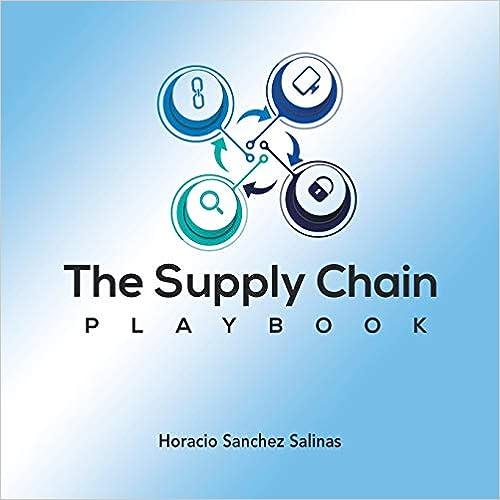Question
Background Simcoe Skies is a regional airline with operations across Eastern Canada. Simcoe Skies wants to improve its baggage handling system, and senior management has
Background
Simcoe Skies is a regional airline with operations across Eastern Canada. Simcoe Skies wants to improve its baggage handling system, and senior management has asked you to research another regional airline known to have efficient and effective operations in place: Olympia Airlines. Olympia Airlines is unique among U.S. air carriers not only for its extensive flight coverage of remote towns throughout the U.S. Northwest (it also covers Hawaii, Alaska, and Mexico from its primary hub in Seattle), but it is also one of the smallest independent airlines, with 10,300 employees, including 3,000 flight attendants and 1,500 pilots. What makes Olympia Airlines really unique, though, is its ability to build state-of-the-art processes, using the latest technology, that yield high customer satisfaction. Indeed, J.D. Power and Associates has ranked Olympia Airlines highest in North America for seven years in a row for customer satisfaction. Olympia Airlines was the first to sell tickets via the internet, first to offer web check-in and print boarding passes online, and first with kiosk check-in. Olympias Director of System Operation Control states, We are passionate about our processes. If its not measured, its not managed. One of the processes Olympia is most proud of is its baggage handling system. Passengers can check in at kiosks, tag their own bags with barcode stickers, and deliver them to a customer service agent at the carousel, which carries the bags through the vast underground system that eventually delivers the bags to a baggage handler. Enroute, each bag passes through TSA (Transportation Security Administration) automated screening, and is manually opened or inspected if it appears suspicious. With the help of barcode readers, conveyer belts automatically sort and transfer bags to their location (called a pier) at the tarmac level. A baggage handler then loads the bags onto a cart and takes it to the plane for loading by the ramp team waiting inside the cargo hold. There are different procedures for hot bags (bags that have less than 30 minutes between transfer) and for cold bags (bags with over 60 minutes between plane transfers). Hot bags are delivered directly from one plane to another (called tail-to-tail). Cold bags are sent back into the normal conveyer system. The process continues on the destination side with Olympias unique guarantee that customer luggage will be delivered to the terminals carousel within 20 minutes of the planes arrival at the gate. If not, Olympia grants each passenger a 2,000 frequent-flier mile bonus! The airlines use of technology includes barcode scanners to check-in the bag when a passenger arrives, and again before it is placed on the cart to the plane. Similarly, on arrival, the time the passenger door opens is electronically noted and bags are again scanned as they are placed on the baggage carousel at the destination; tracking this metric means that the time to carousel (TTC) deadline is seldom missed. And the process almost guarantees that the lost bag rate approaches zero. On a recent day, only one out of 100 flights missed the TTC mark. The baggage process relies not just on technology, though. There are detailed, documented procedures to ensure that bags hit the 20-minute timeframe. Within one minute of the plane door opening at the gate, baggage handlers must begin the unloading process. The first bag must be out of the plane within three minutes of parking the plane. This means the ground crew must be in the proper locationwith their trucks and ramps in place and ready to go. Largely because of technology, flying on Olympia Airlines is remarkably reliable - even in the dead of winter with only a few hours of daylight, 50 mph winds, slippery runways, and low visibility. Olympia Airlines has had the industrys best on-time performance, with 87% of its flights landing on time.
1. Prepare a process flowchart of the process a passengers bag follows from check-in to destination carousel at Olympia Airlines: Consider all possible variations in the bags routing. Consider sub-dividing the process into sections for
(i) loading onto a plane, and (ii) offloading from a plane.
Include the exception process for the TSA opening of selected bags.
Process flowcharts will be assessed on
(i) accuracy of process displayed, as well as
(ii) visual clarity of the flowchart itself.
2. Prepare a brief written report providing responses to the following topics:
What metrics (specific and measurable) are needed to track baggage?
What is the role of scanners in the baggage process?
How does the kiosk alter the check-in process?
What are advantages and disadvantages of using kiosks.
Step by Step Solution
There are 3 Steps involved in it
Step: 1

Get Instant Access to Expert-Tailored Solutions
See step-by-step solutions with expert insights and AI powered tools for academic success
Step: 2

Step: 3

Ace Your Homework with AI
Get the answers you need in no time with our AI-driven, step-by-step assistance
Get Started


